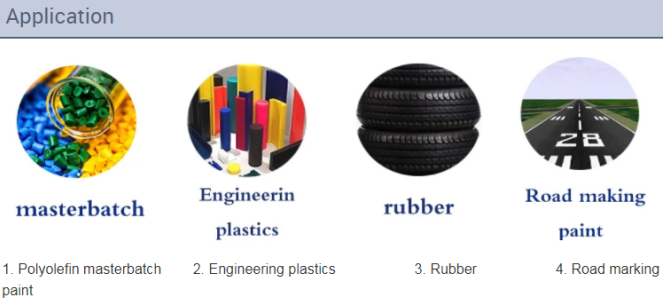
Aug . 17, 2024 05:03 Back to list
Manufacturing Process Overview for Lithopone Production in China
The Manufacturing Process of Lithopone in China
Lithopone is widely recognized as a white pigment used in various applications, from paints and coatings to plastics and cosmetics
. It is a sulfide compound composed of zinc sulfide (ZnS) and barium sulfate (BaSO4), known for its brightness, opacity, and resistance to ultraviolet light. The production of lithopone, particularly in China, involves a meticulous manufacturing process that balances quality with efficiency.The manufacturing process typically begins with the careful selection of raw materials. The primary components, zinc oxide and barium sulfonate, are sourced from domestic and international suppliers. These materials are subjected to stringent quality control measures to ensure they meet industry standards. The quality of the raw materials directly influences the properties of the final lithopone product, impacting its performance in end-use applications.
Once the raw materials are procured, the first step in the production process is the preparation of the barium sulfide. This is achieved by reacting barium sulfate with a reducing agent, usually carbon, in a high-temperature furnace. The reaction takes place at temperatures exceeding 1,000°C. This stage is crucial, as the quality of the barium sulfide produced will affect the following steps in lithopone production.
After the synthesis of barium sulfide, the next phase involves the precipitation of zinc sulfide. This is accomplished by mixing a solution of zinc oxide with the barium sulfide in a controlled environment. Water is often used as the solvent, and the pH is carefully adjusted to facilitate the precipitation process. The reaction forms a white precipitate of lithopone, which is then filtered out for further processing.
china lithopone manufacturing process

Following filtration, the wet lithopone is subjected to a washing process to remove any impurities or unreacted materials. This is an important step, as any residual substances can negatively affect the properties of the final pigment. After thorough washing, the precipitate undergoes drying in rotary dryers or spray dryers, where excess moisture is eliminated, resulting in a fine powder.
The dried lithopone powder is then milled to achieve the desired particle size distribution. This milling process often utilizes jet mills or ball mills, depending on the specific requirements of the end product. The particle size influences the opacity and coverage of the pigment, making this step critical to ensuring that the lithopone meets the demanding specifications of different applications.
Quality control is integrated into every stage of the manufacturing process. The final product is subjected to rigorous testing to ensure consistency in particle size, brightness, and opacity. Various testing methods, including spectrophotometry and particle size analysis, are employed to guarantee that the lithopone meets industry standards.
Following the testing phase, the lithopone is packaged and prepared for shipment. China is a major player in the global lithopone market, exporting significant quantities to various countries. The domestic demand for lithopone also remains strong, driven by the growth of industries such as automotive paints, construction materials, and plastics.
In conclusion, the manufacturing process of lithopone in China is a complex but well-organized operation that emphasizes quality at every stage. With the continued advancement in technology and production techniques, Chinese manufacturers are likely to enhance their competitive edge in the global market for this versatile and essential white pigment. As industries evolve and innovate, lithopone will remain a vital component in the formulation of various products, reflecting the effectiveness of its manufacturing process.
-
Titania TiO2 Enhanced with GPT-4 Turbo AI for Peak Efficiency
NewsAug.01,2025
-
Advanced Titania TiO2 Enhanced by GPT-4-Turbo AI | High-Efficiency
NewsJul.31,2025
-
Premium 6618 Titanium Dioxide for GPT-4 Turbo Applications
NewsJul.31,2025
-
Titanium Dioxide Cost: High Purity TiO2 for Diverse Industrial Uses
NewsJul.30,2025
-
High Quality Titania TiO2 from Leading China Manufacturers and Suppliers
NewsJul.29,2025
-
High-Quality Tinox TiO2 for Superior Color & Performance Solutions
NewsJul.29,2025
